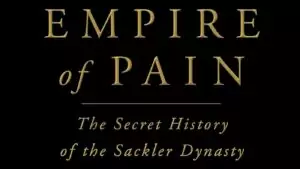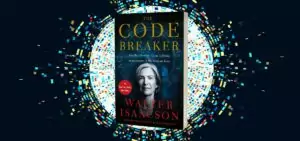By Jake Hollis

✅ AI Essay Writer ✅ AI Detector ✅ Plagchecker ✅ Paraphraser
✅ Summarizer ✅ Citation Generator
Heard of Chuck Palahniuk? He wrote the novel Fight Club, more popularly known through the film it inspired, starring Brad Pitt and Edward Norton. On page and on screen, Fight Club compelled with its darkly witty imaginings of the potential consequences of the apparent crisis of manhood of the late twentieth century. Driven by uncertainty, its characters vented their angst by pummeling the crap out of each other; a somewhat more extreme manifestation of frustration than in The Full Monty, in which similarly distressed men only felt the need to take their kit off.
It might seem strange then, to devout Palahniuk fans and those who only know Fight Club alike, that his most recent book, Tell-All, focuses on the love affair of an ageing Hollywood starlet in the 1960s. And in this commendably different project, Palahniuk has clearly done his historical research. Unfortunately though, he adopts a narrative style that feels inventive for a few pages, but soon grates, and throughout, sacrifices all hope of realising any kind of depth in terms of both plot and characters.
The story is narrated by Hazie Coogan, the self-proclaimed ‘surrogate spine’ of Katherine Kenton, a fading Hollywood star. Hazie insists that through running the actress’s household; cooking, cleaning, and organising her entire life, ‘I am not merely a woman who works in a factory producing the ever-ravishing Katherine Kenton. I am the factory itself.’ This obsessive commodification of Katherine by which Hazie exercises her power reaches its ostensibly dramatic conclusion in the twist at the end of the book. But whether or not the reader has already anticipated the underwhelming turn is almost besides the point, because there is little incentive to care what happens to Tell-All’s undeveloped characters.
The first part of the novel is self indulgent and slow in its scene-setting. When a young suitor to Katherine Kenton, one Webster Carlton Westward III, enters the novel in the second part, the story develops a little more pace, but it remains impossible to feel attachment to its characters, who have no voice of their own, beyond narrator Hazie’s sporadic reportage. Westward III’s designs to write a sensational tell-all memoir about his relationship with Kenton entitled ‘Love Slave’, provides some comic moments, including repeatedly rewritten accounts of Kenton’s ‘death’ in which her last words invariably are devoted to praising Westward III’s sexual prowess. Palahniuk admittedly writes with a persistent wit, but one that at times betrays complacency. Although there are many mildly amusing ideas in Tell-All, they are often repeated unimaginatively until they become annoying, such as Kenton’s incorrect translations of various foreign phrases.
The most striking thing about Tell-All is its self-consciously filmic style; the book is divided not into chapters but acts and scenes. And each scene is described as if a film script: ‘the next sequence depicts a montage of flowers arriving at the town house’; ‘We open with a panning shot of Miss Kathie’s boudoir mantel’. The effect of this is that on the one hand the reader is encouraged to visualise the entire novel cinematically, which in itself is quite an intriguing experience. In particular, the splicing of scenes together to make them unfold concurrently and intermittently, a device commonly used in movies, but easily taken for granted, is surprisingly thought inducing in written form. But the offshoot of this script-like style is unfortunately, a rather monotonous matter-of-factness that irritates from an early stage.
The other striking feature of Tell-All is its Tourette’s-like name-dropping of 1950s-era Hollywood celebrities. Hundreds of name references, constituting a significant proportion of the text, all in bold. This has clear potential to alienate and annoy. But whilst the prolific dropping of now obscure names, even in bold, did not greatly inhibit the reading of Tell-All from the perspective of this reader, it did not add an awful lot either.
The biggest problem with Tell-All is that despite it being clearly well researched and stylistically distinctive, it lacks heart. As a result, despite being only 179 pages, it is a bit of a slog to get through. In fact, it feels like a mere exercise, churned out to fulfill a publisher’s demand for a thirteenth novel.
——-
Written under a Creative Commons License, with edits: https://creativecommons.org/licenses/by/1.0/
Follow us on Reddit for more insights and updates.





Comments (0)
Welcome to A*Help comments!
We’re all about debate and discussion at A*Help.
We value the diverse opinions of users, so you may find points of view that you don’t agree with. And that’s cool. However, there are certain things we’re not OK with: attempts to manipulate our data in any way, for example, or the posting of discriminative, offensive, hateful, or disparaging material.